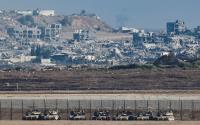24 January 2008
The European Commission yesterday began to add flesh to the bones of its plans to reduce carbon dioxide emissions. We already knew about the EU target of cutting greenhouse gasses by 20 per cent below 1990 levels and increasing renewable energy to 20 per cent of the mix by the end of the next decade. What was new in these proposals is the national breakdown of emission reduction targets.
Richer nations will be instructed to bear more of the burden, whereas less-developed economies such as Romania and Bulgaria will be allowed to increase their emissions. Britain's provisional target for reducing its emissions is by 16 per cent by 2020.
The proposals have been met with resistance from business and union leaders, who complain that the international competitiveness of European companies will be hit if they alone in the world are forced to bear these new pollution costs. Of course, an international agreement and commitment to reduce emissions is needed. But these industry lobbyists need a reality check if they think it is in their interests to resist these proposals. Unless urgent action is taken to curtail climate change, they will have far more to worry about than a relative loss of international competitiveness.
Environmental activists say the EU's targets are too low. They are right. But perhaps the more pressing issue is not the lack of ambition in the goals but the question of how emission reductions are actually going to be achieved. The machinery for delivering cuts at present is woefully inadequate. All the EU has at the moment is a carbon "cap and trade" programme for heavy industry which began in 2005. But the market has so far been quite useless in cutting emissions. This is because national governments and industries have colluded in sabotaging the system. Ludicrously generous emission limits have been negotiated for polluters by member states. And the companies have not even been forced to bid for these allowances. The result is that the price of carbon permits has been low. Making matters worse is the fact that what small rises there have been in energy production costs have been rapidly passed on to consumers (as we are seeing with energy prices in Britain), while these firms have felt no real pressure to curb emissions. And, of course, the emissions trading system (ETS) does not include key sectors such as aviation, agriculture, building, shipping and road transport.
The EU says it will decide carbon allowances at European level and end national haggling for them. It is also pledging to substantially reduce the number of free credits in coming years, scrapping them entirely from 2013 and introducing an auctioning system instead. The ETS will also be extended to include more industrial sectors and aviation. But there seems to be some confusion in Brussels. The head of the EC, Jose Manuel Barroso, spoke this week about the possibility of giving European companies their carbon allowances under the ETS free of charge if an international agreement on cutting emissions fails to materialise. But this would render the whole system useless. What incentive would there be for firms to reduce emissions in such circumstances?
It would be wrong not to recognise and welcome the lead the EU has taken in meeting the challenge of climate change. Compared with the United States, it has been a model of effectiveness. But the Commission must not fall into the trap of imagining that it can rely on the market – in the form of the ETS – to do all the hard work. Even if the ETS is beefed up sufficiently, emissions from transport will be reduced only by taxation – and that will entail a good deal of political pain. Setting out targets is the easy part. European leaders must be prepared for the tough political battle ahead.






